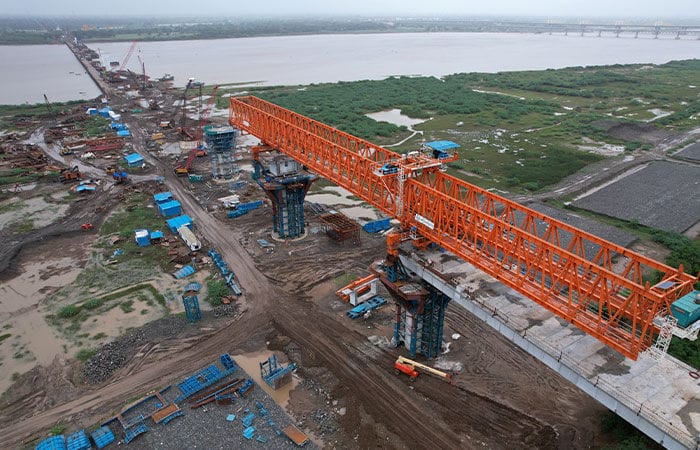The work on the 508-km bullet train project connecting Ahmedabad to Mumbai via high-speed rail connectivity is now progressing rapidly.
The bullet train, which will run at a maximum speed of 320 km/h, will have its track passing over the Narmada River in Bharuch district, between Vadodara and Surat.
The construction of the 1.4-km-long bridge over the Narmada River is one of the most challenging tasks of this project, and according to officials associated with the project, the foundation work for this bridge is nearing completion.
On the bullet train route, a total of 24 bridges are being built in Gujarat and Maharashtra combined, with the Narmada River bridge being the largest.
Interestingly, four of these 25 well foundations are 72.5 metres deep, with the deepest one being 77 metres. To put this into perspective, the length of these four ‘well foundations’ is comparable to the height of the Qutub Minar in Delhi, with one of them even being 4.5 metres taller than Qutub Minar.
The height of Qutub Minar is 72.5 metres. With most of the well foundations now complete, work on building the pillars on top of them will begin soon.
What is ‘well foundation’?
The well foundation method has been used to prepare the foundation within the river for constructing this bridge. It is an old and reliable technique for constructing foundations for large river bridges, and it continues to be used today.
A cylindrical (circular) foundation, hollow on the inside, is constructed deep down from the riverbed. After the foundation is ready, pillars are built on top of it, and the bridge takes shape above the pillars.
For the bridge over the Narmada River, 25 such foundations are required, of which 19 have already been completed.
10 out of 20 bridges completed in Gujarat
Vadodara
Dhadhar River (120 m)
Valsad
Par River (320 m)
Kolak River (160 m)
Auranga River (320 m)
Navsari
Purna River (360 m)
Mindhola River (240 m)
Ambika River (200 m)
Venganiya River (200 m)
Kheda
Mohar River (160 m)
Vatrak River (280 m)



